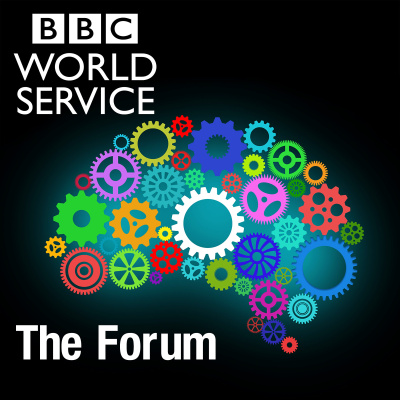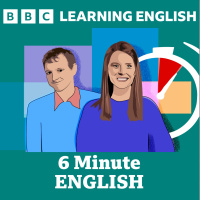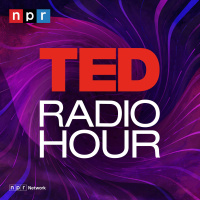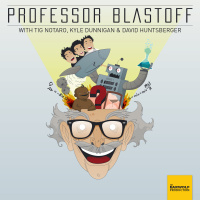Sinopse
A world of ideas
Episódios
-
Dido of Carthage: A love story gone wrong
29/10/2020 Duração: 39minA Phoenician princess, who fled into exile to escape the cruel king of Tyre, sailed across the Mediterranean Sea to North Africa, where she founded the great city of Carthage in the ninth century BC. Well, that is one story about Dido, or Elissa, as she is known in today's Lebanon and Tunisia. Another, from the Roman poet Virgil, puts her at the centre of a tragic love story: first entranced, then abandoned by the wandering Trojan hero Aeneas, Dido curses him and takes her own life. So who was the real Dido? Was she a powerful independent queen, or a victim - a spurned lover? And did she exist at all? Bridget Kendall is joined by Josephine Quinn, professor of Ancient History at Oxford University, and the author of the book In Search of the Phoenicians; Helene Sader, professor of Archaeology at the American University of Beirut, and the author of The History and Archaeology of Phoenicia; Roald Docter, professor of Archaeology at Ghent University and the editor of Carthage Studies; and Boutheina Maraoui Te
-
Paul Robeson: Singer, actor and civil rights activist
22/10/2020 Duração: 39minThe multi-talented Paul Robeson could have turned his hand to pretty much anything he set his mind to: lawyer, athlete and linguist were just some of the career paths he could have taken. But he chose to become an actor and singer, and in doing so reached into the lives of huge numbers of people as one of the most popular American entertainers of his time.Outspoken on the issues of racism, colonialism and the rights of workers, he used his popularity to campaign against the injustice he saw in many countries across the world – not just injustice suffered by his fellow African Americans. During the Cold War, his support for Soviet-style communism was deemed unacceptable by the American establishment, and some set out to destroy his career. Joining Bridget Kendall to examine Paul Robeson’s life are Dr Gerald Horne, the Moores Professor of History and African American Studies at the University of Houston and the author of Paul Robeson: The Artist as Revolutionary; Dr Shana L Redmond, Professor of Musicology an
-
Telling the time: From sundials to satnav
15/10/2020 Duração: 39minMany of us can find the time of day quickly and accurately but where did the idea of time keeping originate and how did our ancestors manage without the instant access we take for granted today?From ancient shadow and water clocks to the latest super accurate optical clocks, Bridget Kendal explores time keeping with the Curator of the Royal Observatory in London, Dr Louise Devoy; the Director of the Museum of the History of Science in Oxford, Dr Silke Ackermann; and watch and clock expert Grégory Gardinetti from the Fondation de la Haute Horlogerie in Geneva.Photo: World Clocks (Credit: EyeWire, Inc.)
-
Writer Jorge Luis Borges: Mixing the magical with the mundane
08/10/2020 Duração: 39min‘We accept reality so readily - perhaps because we sense that nothing is real.' A typically paradoxical quote from the Argentinian writer Jorge Luis Borges whose works have become classics and an influence not just on many Latin American novelists but on countless authors around the world. Yet although he is one of the most analysed figures in literature, even his greatest fans struggle fully to explain his writing. So who was Jorge Luis Borges? And what is it that makes his writing so compelling?To find out, Bridget Kendall talks to three Borges experts: Dr. Patricia Novillo-Corvalán, from the University of Kent, author of Borges and Joyce, An Infinite Conversation; Prof. Evelyn Fishburn, from University College London, author of Hidden Pleasures in Borges’s Fiction; and Edwin Williamson, Professor at Oxford University and editor of the Cambridge Companion to Jorge Luis Borges.(Image: Jorge Luis Borges in 1973 Photo: Horacio Villalobos/Corbis via Getty Images)
-
Elizabeth Fry: 'The angel of prisons'
01/10/2020 Duração: 39minLife behind bars in English prisons in the early nineteenth century was, to put it mildly, grim. Prisons at the time were often damp, dirty and over-crowded. Common punishments included shipping convicts to colonies like Australia - and many crimes carried the death penalty. And the poor suffered most of all, because they couldn’t buy privileges like extra food rations. Into all this walked a woman known as the "angel of prisons", Elizabeth Fry. She was one of the major driving forces behind a new way of thinking about prisons – one that stressed that improving conditions for prisoners and treating them with humanity would lead to better outcomes and lower re-offending rates. A Christian philanthropist from a large Quaker family, her ideas were taken up across much of Europe, and she became something of a celebrity in Victorian England.Joining Rajan Datar to discuss her work and legacy are: Averil Douglas Opperman, author of a biography of Elizabeth Fry called 'While It Is Yet Day'; Criminal barrister, Harry
-
The 1921 Tulsa Race Massacre
24/09/2020 Duração: 39minGreenwood was an African American success story: a thriving, wealthy district of Tulsa. Over the course of two days at the end of May 1921 it was the scene of looting, rioting and murder. After 18 hours the area was razed to the ground by vigilantes. One eye witness said it looked like the world was coming to an end with bullets.Nobody to this day has been able to establish the true number of deaths. Some put the figure in the hundreds, with casualties on both sides. The community rebuilt itself however, and today it’s the focus of a multi-million dollar investment and education programme.Joining Rajan Datar to examine the events of 1921 are Carol Anderson, the Charles Howard Candler Professor of African American Studies at Emory University and the author of White Rage; Hannibal B Johnson, lawyer and author of numerous books on the city’s history including the forthcoming Black Wall Street 100: An American City Grapples With Its Historical Racial Trauma and John W Franklin, cultural historian and former senio
-
Queen Tamar: The myth of a perfect ruler
17/09/2020 Duração: 39minQueen Tamar was one of Georgia’s most iconic and colourful rulers, a powerful medieval sovereign who controlled large parts of the Caucasus and the eastern side of the Black Sea and forged strong cultural links with both the Byzantine West and the Persian South. Her influence extended beyond the battlefield: she presided over the last phase of the Georgian ‘Golden Age’ which saw the building of classic Georgian churches and a flowering of the Arts that produced one of Georgia’s most important poets. So who was Queen Tamar? How did she rise to power and outmanoeuvre her enemies? And why do the myths about her rule publicised by her faithful chroniclers persist till today? Bridget Kendall is joined by Dr. Ekaterine Gedevanishvili, Senior Researcher at the National Centre for the History of Georgian Art in Tbilisi; Alexander Mikaberidze, Professor of History at Louisiana State University; Dr. Sandro Nikolaishvili, researcher at the University of Southern Denmark, who works on retracing connections between the By
-
Who were the Huguenots?
10/09/2020 Duração: 40minThe Huguenots gave the word 'refugee' to the English language - they were French protestants escaping religious persecution, who fled from France to neighbouring states between the 16th and 18th centuries. Despite their early experience of violence and religious upheaval, they are widely celebrated for their contribution as migrants, famously as silk weavers and silversmiths, traders and teachers.Joining Bridget Kendall to discuss the Huguenots and their global legacy are three experts: Owen Stanwood is Associate Professor of History at Boston College in the United States and is the author of 'The Global Refuge: Huguenots in an Age of Empire'; Ruth Whelan is Professor of French at Maynooth University in Ireland, where she researches the religious and intellectual culture of French Protestants between 1680 and 1730; and Kathy Chater is a London-based historian and genealogist. She’s the author of 'Tracing Your Huguenot Ancestors'.Image: Engraving depicting French Huguenot refugees as they landed in Dover Imag
-
Smallpox: The defeat of the speckled monster
03/09/2020 Duração: 40minAs scientists around the world look for ways to combat COVID-19, the only human disease ever to be eradicated by vaccination could provide us with some insights.Since 1979 the world has been free from smallpox. But before the WHO’s concerted effort to eradicate the disease, it claimed millions of victims every year. It’s estimated that 300 million people died from it in the 20th century alone, and those who survived were often left with disfiguring scars or sometimes blind. Such was its destructive power, some commentators have argued that smallpox changed the course of human history, wiping out indigenous populations and allowing imperial nations to colonise new territories with little resistance. The English doctor Edward Jenner developed the first vaccine against smallpox in 1796. This procedure laid the foundations for immunisation programmes which have saved hundreds of millions of lives ever since, by giving people protection against a whole range of diseases - not just smallpox.Joining Bridget Kendal
-
Lal Ded, mystical Kashmiri poet
27/08/2020 Duração: 39minThere is a great deal of mystery surrounding the poems attributed to the female Kashmiri poet, mystic and sage known as Lal Ded or Lalla. There are no records of her life but what is beyond doubt is the vitality, wisdom and endurance of her work. Her poems, usually just four lines long, have been around for centuries and remain so popular that some of them have passed into everyday speech in Kashmir. Lal Ded’s poems are also celebrated for their independence of thought and spirit and for challenging stereotypical images of what counts as female poetry during the Middle Ages. Rajan Datar is joined by leading Kashmiri writer and translator Neerja Mattoo; poet Ranjit Hoskote, author of a complete rendering of Lalla's poetry into English; Andrew Schelling, professor of poetry at Naropa University in Colorado who has translated and edited Indian devotional poetry for many years; and Dean Accardi, professor of history at Connecticut College who specialises in medieval Kashmir.(Photo: a woman at sunset. Credit: rvi
-
Secrets of the Great Pyramid
20/08/2020 Duração: 39minThe Great Pyramid of Giza in Egypt is one of the greatest wonders of the ancient world. It is the largest pyramid ever built and even today, with advanced satellite and thermal imaging and other high tech science, we don’t know everything about the pyramid- exactly what’s inside or how it was built. To explore the history of The Great Pyramid - also known as the Pyramid of Khufu, after the Pharaoh who commissioned it as his tomb - Rajan Datar is joined by Salima Ikram, Distinguished University Professor and Egyptology Unit Head at the American University in Cairo, space archaeologist Sarah Parcak, a National Geographic fellow and Professor at Birmingham University Alabama in the USA, and Professor Joyce Tyldesley, an archaeologist and Egyptologist from the University of Manchester in the UK.Photo: The Pyramids at Giza (Getty Images)
-
Ray Bradbury, a master of science fiction
13/08/2020 Duração: 39min”People ask me to predict the future, when all I want to do is prevent it.” Ray Bradbury has been acclaimed as the writer most responsible for bringing modern science fiction into the literary mainstream but, as the quote above shows, he regarded himself as the author of modern philosophical fables, rather than a sci-fi writer. In his dystopian works, such as Fahrenheit 451, he holds up a mirror to contemporary society and then transposes it into fantastical and futuristic scenarios. Bradbury was a prolific writer who tried his hand at everything from poems and novels to TV and radio scripts but it’s his early short stories which he produced in his twenties that are perhaps the most imaginative.To mark the centenary of Bradbury’s birth, Rajan Datar is joined by three Bradbury experts to help him navigate through the author’s prodigious output: Professor Jonathan Eller from Indiana University who is also the Director of the Center for Ray Bradbury Studies; Dr. Miranda Corcoran who teaches American literature
-
The Fall of the Roman Empire
06/08/2020 Duração: 39minIn 476, the last of the Roman emperors in the West was deposed; in 1776, historian Edward Gibbon wrote “The History of the Decline and Fall of the Roman Empire”, and Rome’s fate became a major point of comparison for all empires. In Gibbon's view, instead of inquiring why the Roman empire was destroyed precisely 1300 years before, we should rather be surprised that it had subsisted so long. Ever since, there has been a fascination with what changed in Rome in 476 and why, and whether there were more significant changes earlier or later than that date and, importantly, what stayed the same.In this edition of The Forum, Rajan Datar explores the ideas about Rome’s Fall with Sarah E. Bond, Associate Professor of History at the University of Iowa, USA; Meaghan McEvoy, Lecturer in Byzantine Studies at Macquarie University in Sydney, Australia; and Peter Heather, Professor of Medieval History at King’s College London, UK.(Photo: Sack of Rome by the Visigoths led by Alaric I in 410. Coloured engraving. Credit: Prisma
-
Picasso, artist of reinvention
30/07/2020 Duração: 39minPablo Picasso is commonly regarded as one of the most influential artists of the 20th Century, changing our way of seeing with his radical innovation and revolutionary approach. As pioneer of Cubism, godfather to the Surrealists, and creator of the enduring anti-war painting Guernica, he produced thousands of paintings in his lifetime, not to mention his sculptures, ceramics, stage designs, poetry and plays.Rajan Datar discusses his life and work with curators Ann Temkin and Katharina Beisiegel, and art historian Charlie Miller.(Photo: Pablo Picasso in 1955. Credit: Hulton Archive/Getty Images)
-
Tolstoy: War and Peace
23/07/2020 Duração: 40min'War and Peace' by the Russian novelist Leo Tolstoy charts the story of Russia during the Napoleonic wars of the early 19th century, covering the pandemonium and brutality of the battlefield, as well as the equally intense dramas and loves of several families. It is a monumental novel, tracking the fortunes of dozens of brilliantly drawn individuals, with a cast of more than six hundred characters, both historical and fictional. So why is 'War and Peace' still such a compelling masterpiece, and why did Tolstoy later disown it?Joining Bridget Kendall are Dr Galina Alexeeva, head of Research at Yasnaya Polyana, Tolstoy’s former country estate in Russia; Andrei Zorin, Professor of Russian at Oxford University and author of a new biography of Tolstoy, and Professor Donna Orwin, author of 'Simply Tolstoy', who’s from the University of Toronto in Canada. (Image: Anthony Hopkins as Pierre Bezukhov in the 1972 BBC 20- part dramatization of Leo Tolstoy’s War and Peace. Credit: BBC Copyright pictures)
-
Chaucer, father of English poetry
16/07/2020 Duração: 39minGeoffrey Chaucer has been called the father of English poetry and the greatest poet in English before Shakespeare. He is best known for The Canterbury Tales, stories told by a band of pilgrims on their way from London to the shrine of Thomas Becket who was murdered in Canterbury Cathedral two centuries before. Chaucer’s was an age of plague, war and revolt and his pilgrims bring insight into the life and values of those tumultuous times, from the bawdy Miller and the earthy Wife of Bath to the corrupt Pardoner and the Knight whose chivalry was increasingly out of step with the times. Bridget Kendall explores the range of Chaucer’s world with Emily Steiner, Professor of English at University of Pennsylvania; Mary Flannery, Professor of Medieval English Studies at Bern University; and Anthony Bale, Professor of Medieval Studies at Birkbeck College, University of London.(Image: Portrait of Geoffrey Chaucer based on a 19th century engraving by James Thomson Credit: Stock Montage/Getty Images)
-
Up close with tango
09/07/2020 Duração: 39minTango is easy to recognise: those daring steps, the tight hold of the dancing partners, the intense yet melancholy music dominated by the plaintive sounds of the bandoneon. But if you ask what exactly tango is and where it came from, the answer may not be so immediately clear – because it’s more than a genre of music, more than just a style of dance. To get insights into the roots, the culture and even the magic of tango, Rajan Datar is joined by leading tango historians Maria Susana Azzi, Christine Denniston and John Turci-Escobar.Photo: Argentine dancers on stage at the World Tango Championships in 2014 (Getty Images)
-
Valkyries: Fierce women of war
02/07/2020 Duração: 39minIn Norse mythology, Valkyries were women who went out into battles to choose the slain warriors who deserved to be in Valhalla, Odin’s place in Asgard, to carry on fighting in preparation for the final apocalyptic confrontation of Ragnarok, between gods and giants. Fighters would see the Valkyries flying through the air or riding on horses, with shields and helmets, some saving the lives and ships of those they favoured, some causing death to those they disliked. These stories of Valkyries and Valhalla offer insights into the lives and values of the people who told them, with the possibility that human women went into battle too.Bridget Kendall is joined by Sif Rikhardsdottir, Professor and Chair of Comparative Literature at the University of Iceland, Marianne Hem Eriksen, Associate Professor of Archaeology at the Museum of Cultural History, University of Oslo in Norway, and Judith Jesch, Professor of Viking Studies at the University of Nottingham, in the UK.(Picture: Illustration from The Rhinegold and the V
-
Silk routes: 2000 years of trading
25/06/2020 Duração: 39minChina, Iran, Afghanistan, Syria, Uzbekistan and India: if you went to any of these places a thousand years ago, you would find goods and produce from the others. But how did they get there and why? This week’s Forum explores the ancient pattern of trading networks which criss-crossed the plains, deserts and mountains of China, Central Asia and points further West, and which encouraged not just the exchange of commodities such as silk, paper and horses but ideas and people too. Bridget Kendall talks to Valerie Hansen, professor of history at Yale University who has a particular interest in trade and exchanges across Eurasia; historian Dr. Susan Whitfield, former curator of the Central Asian collections at the British Library in London; and Tamara Chin, professor of comparative literature at Brown University whose work focuses on ancient China.(Photo: A man rides a horse at Band-e-Amir lake, central Afghanistan, on a former Silk Route that once linked China with Central Asia and beyond. Credit: Getty Images)
-
Bertha von Suttner: A champion of peace
18/06/2020 Duração: 39minBertha von Suttner’s path to becoming a leading 19th-century pacifist and the first woman to win the Nobel Peace Prize was far from straightforward. The product of the aristocratic and militaristic world of 19th century Bohemia, as a young woman von Suttner eloped to the Caucasus and turned her hand to writing for a living. On her return to Europe she published an acclaimed anti-war novel, Lay Down Your Arms, a work that marked the start of her quest for disarmament. Her long friendship with Alfred Nobel finally bore fruit in the Swedish industrialist’s last will which included the Peace Prize.Bridget Kendall is joined by Dr. Barbara Burns, Reader in German at Glasgow University, and the editor of a new English edition of Lay Down Your Arms; Dr. Peter van den Dungen, former Lecturer in Peace Studies at the University of Bradford and until recently General Coordinator of the International Network of Museums for Peace; and musician Stefan Frankenberger, the author of an audio book called The Unknown Soldier, In









